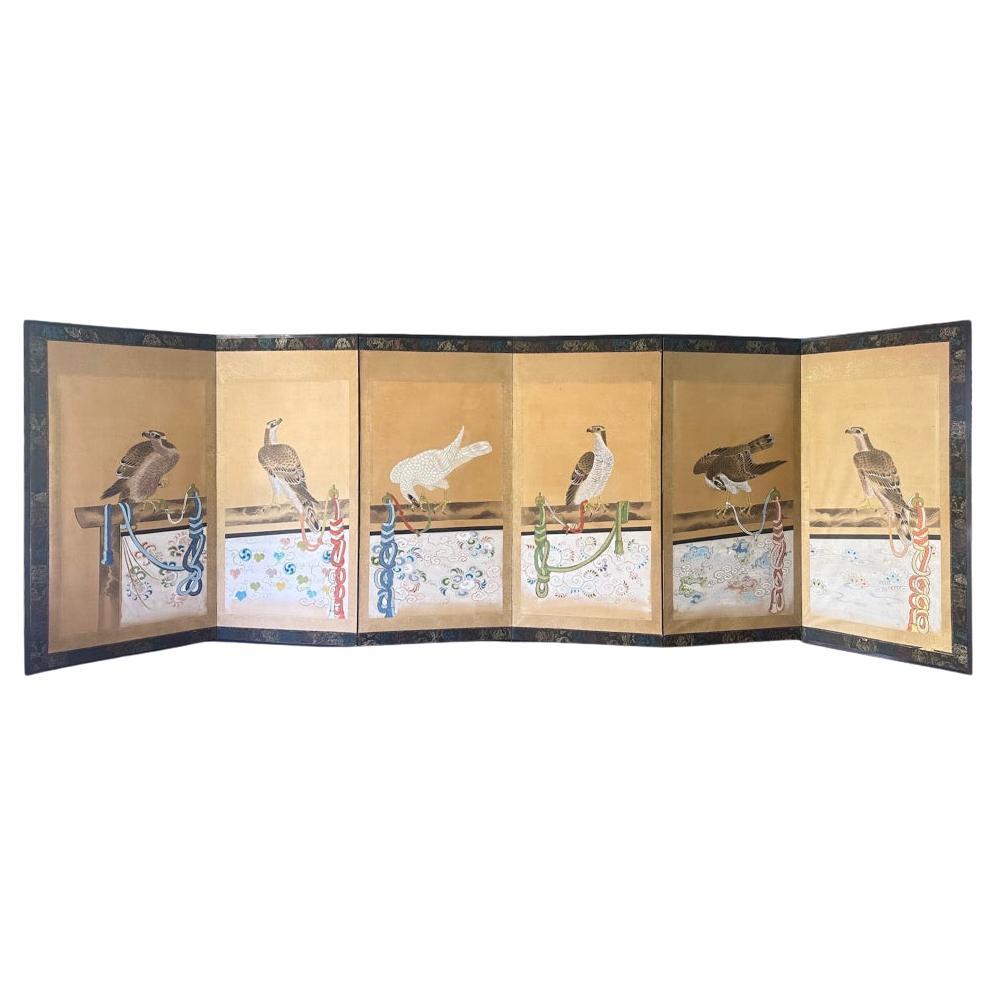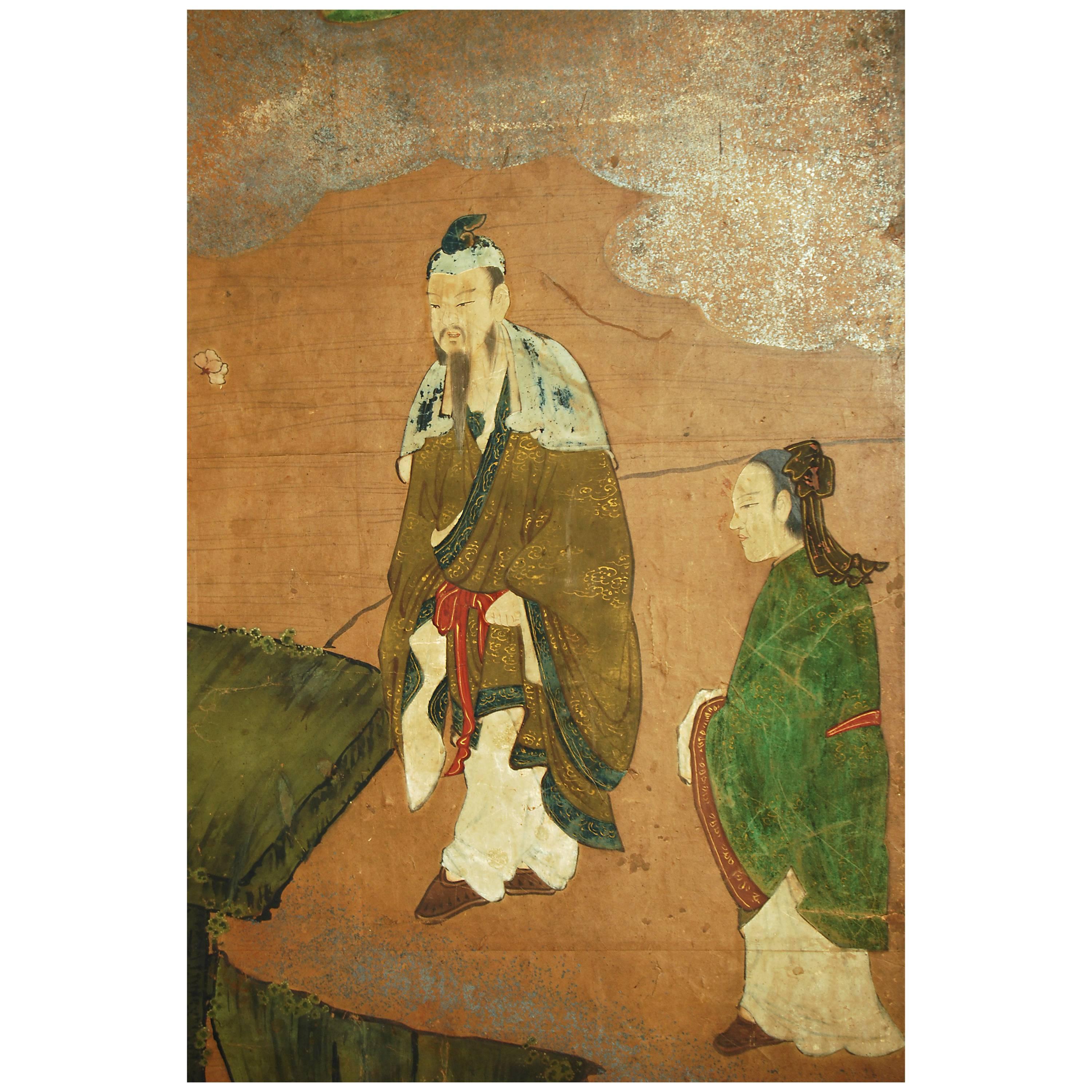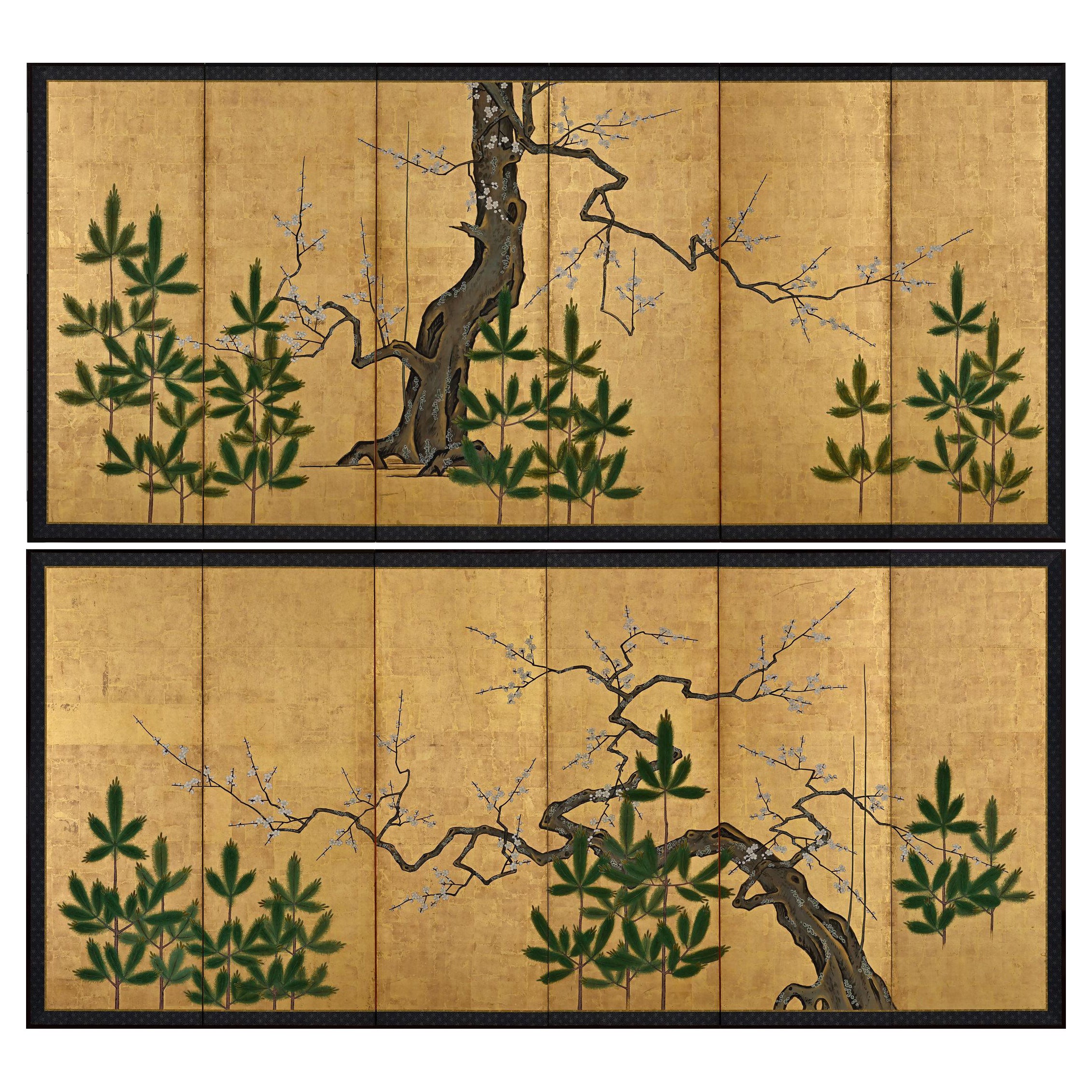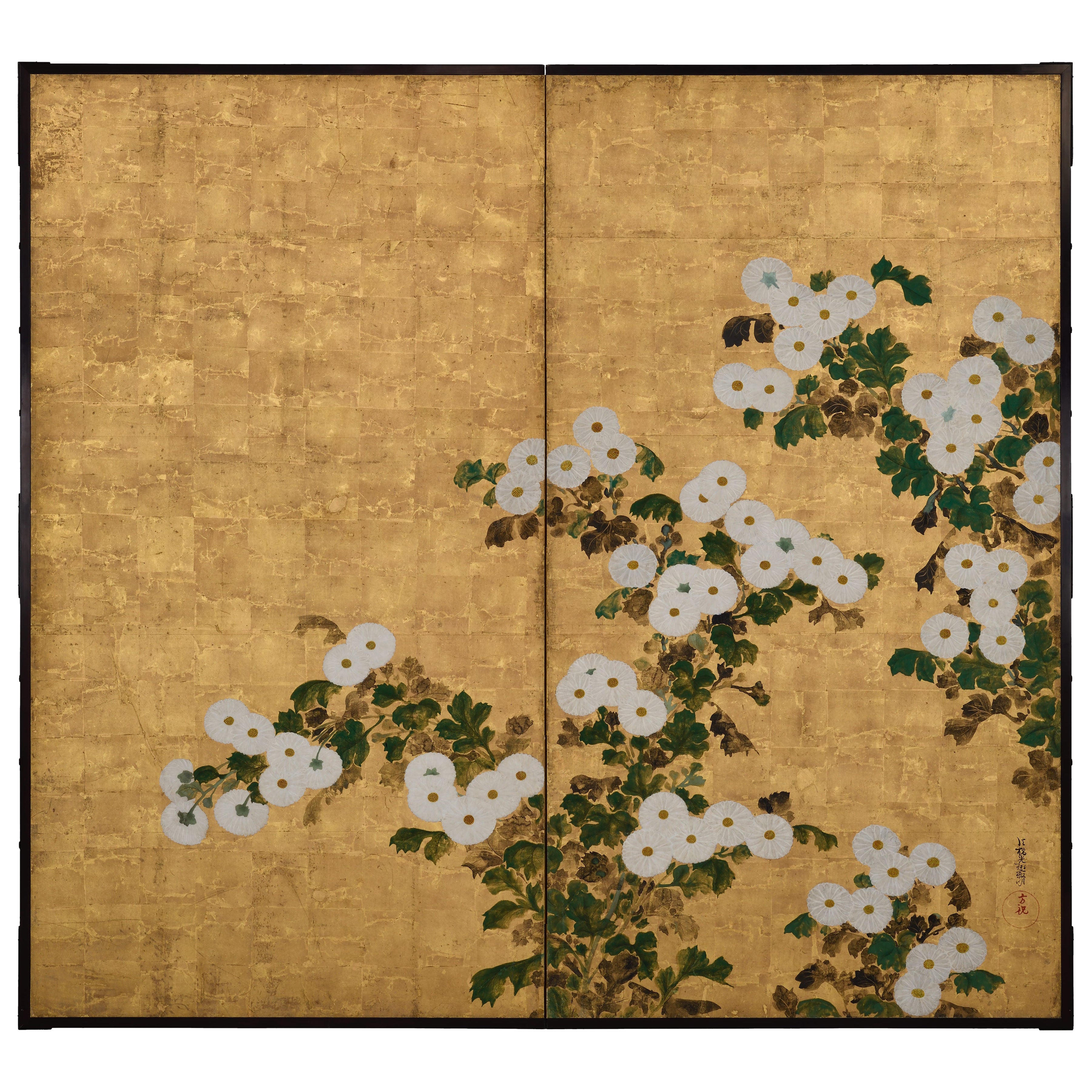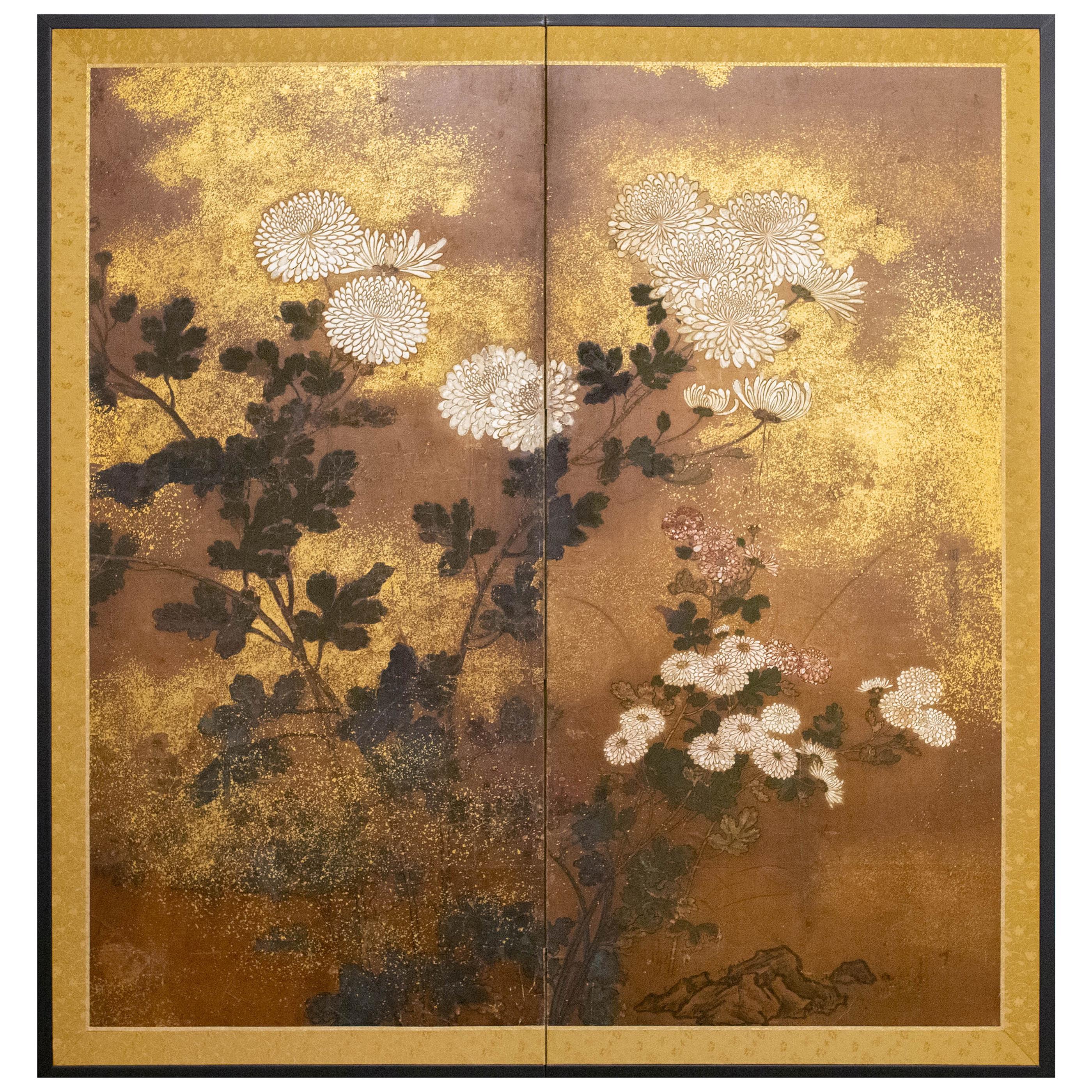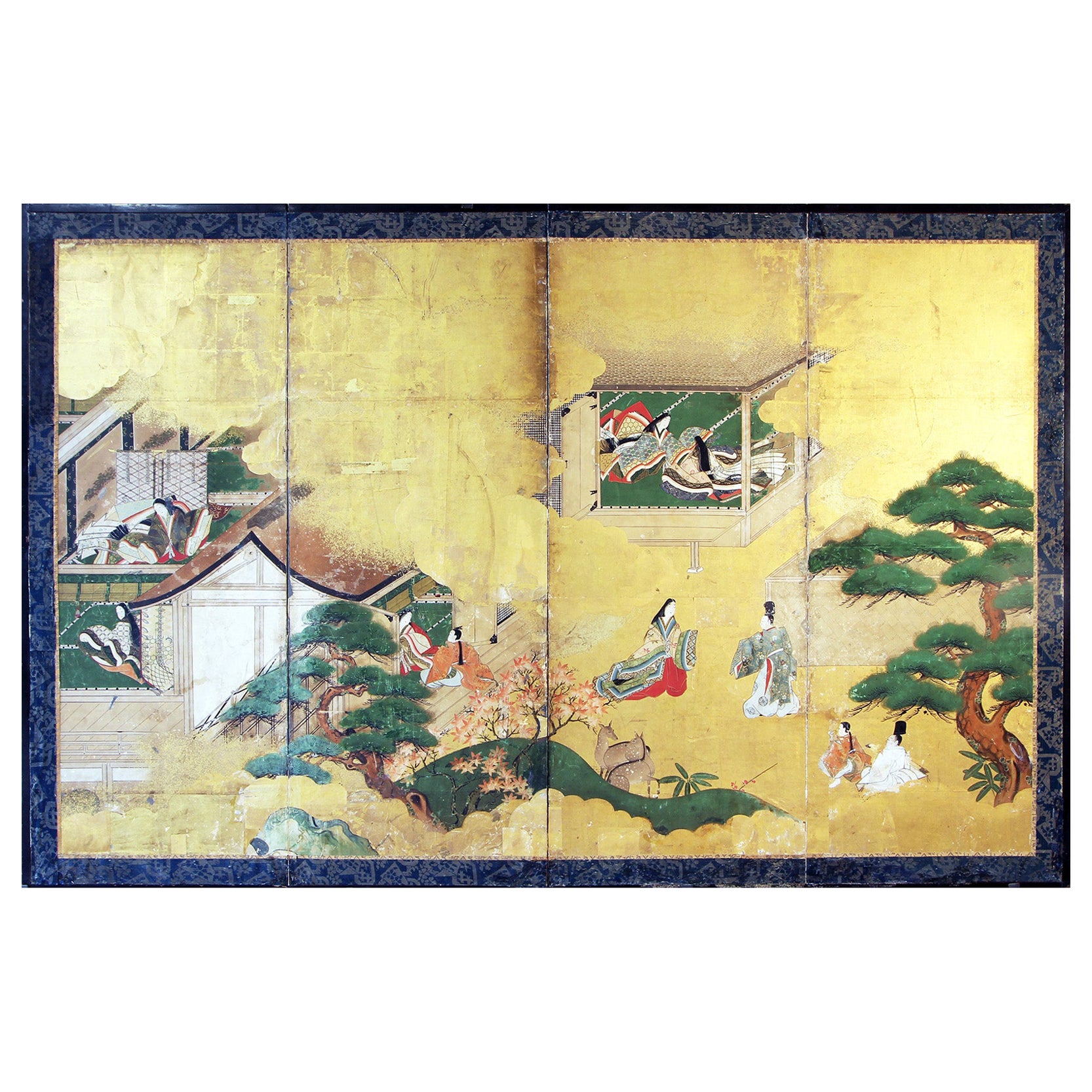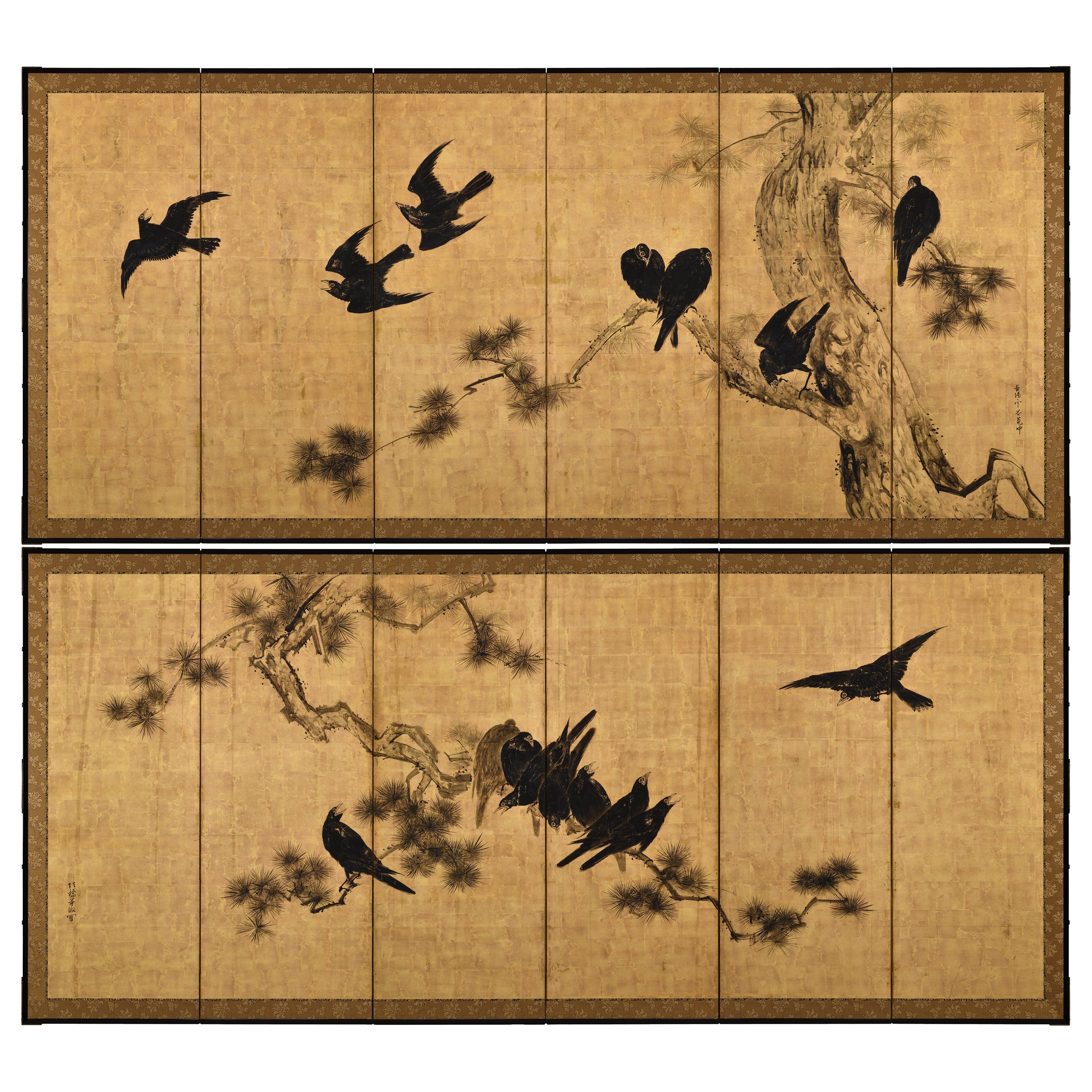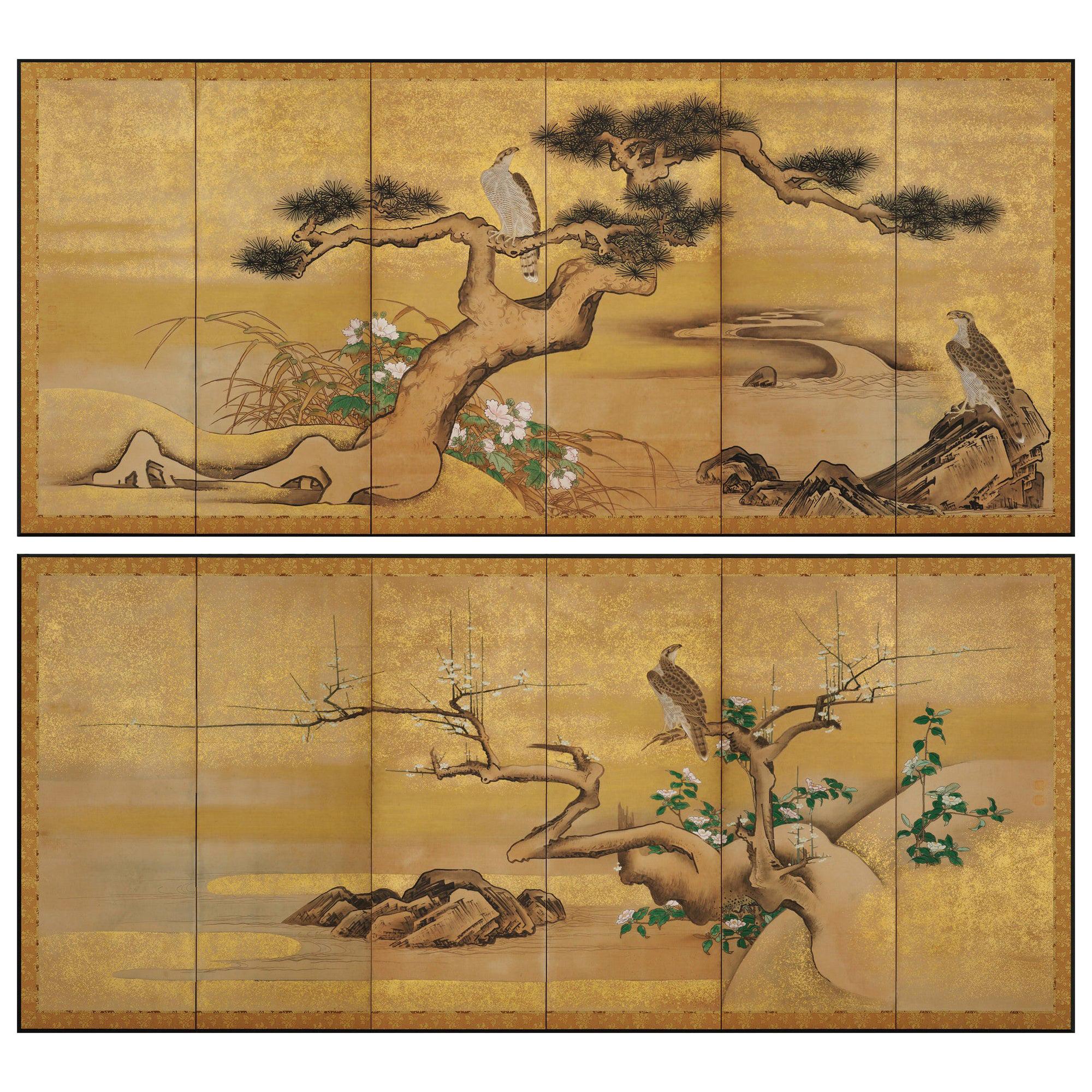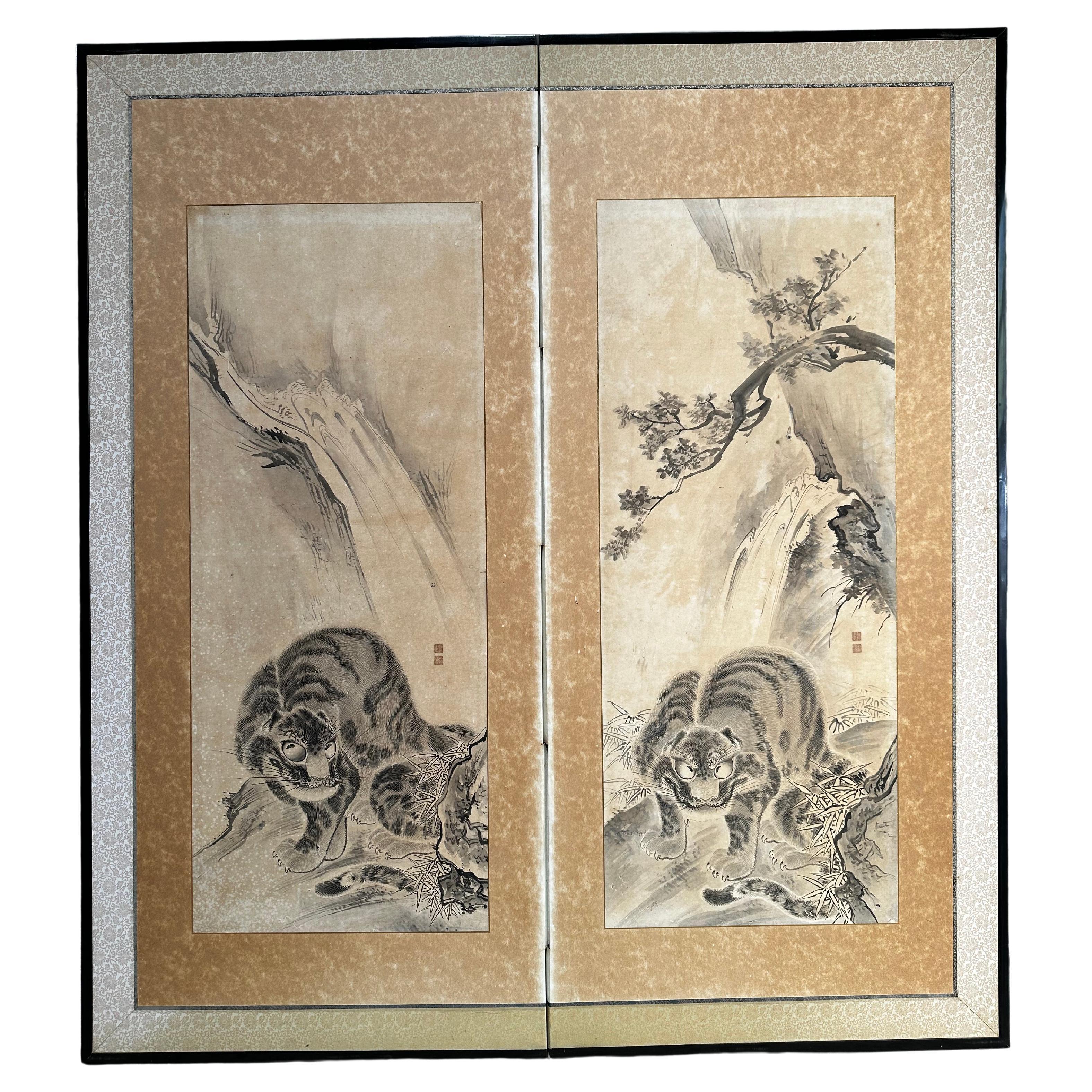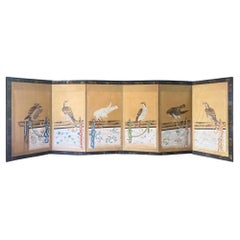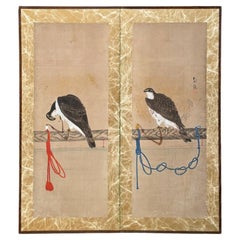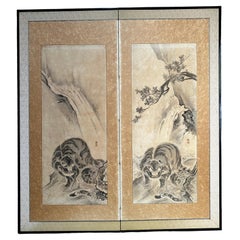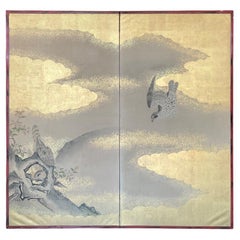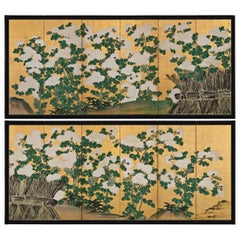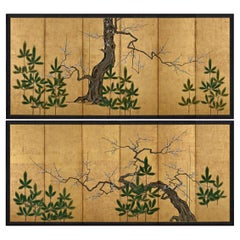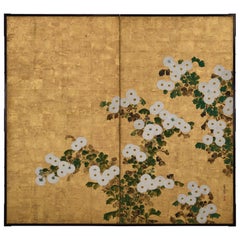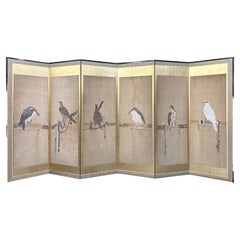
18th Century Japanese Screen: Takagari ( Hawk Falconary )
View Similar Items
Want more images or videos?
Request additional images or videos from the seller
1 of 15
18th Century Japanese Screen: Takagari ( Hawk Falconary )
About the Item
- Dimensions:Height: 134.65 in (342 cm)Diameter: 68.12 in (173 cm)
- Materials and Techniques:
- Place of Origin:
- Period:
- Date of Manufacture:unknown
- Condition:
- Seller Location:Fukuoka, JP
- Reference Number:1stDibs: LU8121235966962
About the Seller
5.0
Gold Seller
Premium sellers maintaining a 4.3+ rating and 24-hour response times
Established in 1998
1stDibs seller since 2023
52 sales on 1stDibs
Typical response time: 3 hours
Authenticity Guarantee
In the unlikely event there’s an issue with an item’s authenticity, contact us within 1 year for a full refund. DetailsMoney-Back Guarantee
If your item is not as described, is damaged in transit, or does not arrive, contact us within 7 days for a full refund. Details24-Hour Cancellation
You have a 24-hour grace period in which to reconsider your purchase, with no questions asked.Vetted Professional Sellers
Our world-class sellers must adhere to strict standards for service and quality, maintaining the integrity of our listings.Price-Match Guarantee
If you find that a seller listed the same item for a lower price elsewhere, we’ll match it.Trusted Global Delivery
Our best-in-class carrier network provides specialized shipping options worldwide, including custom delivery.More From This Seller
View AllLate 18th to Early 19th Century Hawk Screen
Located in Fukuoka, JP
Late 18th to Early 19th Century Hawk Screen
Period: Late Edo
Size: 372 x 125 cm (146.4 x 49.2 inches)
SKU: PTA63
Behold the grandeur of the late Edo per...
Category
Antique 18th Century Japanese Edo Paintings and Screens
Materials
Wood, Paper
Japanese Edo Period Two-Panel Hawks' Screen
Located in Fukuoka, JP
"Hawks' Screen
Period: Edo
Size: 134x152 cm (52.76x59.84 inches)
SKU: SD225
This stunning two-panel screen features depictions of hawks, a subject rich with cultural significance i...
Category
Antique Early 19th Century Japanese Edo Paintings and Screens
Materials
Wood, Paper
18th Century Nagasaki School Tiger Screen
Located in Fukuoka, JP
18th Century Nagasaki School Tiger Screen
Period: Edo
Size: 165 x 172 cm (65 x 67.7 inches)
SKU: PTA69
This exceptional 18th-century screen from the Edo...
Category
Antique Early 18th Century Japanese Edo Paintings and Screens
Materials
Wood, Paper
Majestic Hawks Edo Screen by Tosa School
Located in Fukuoka, JP
Majestic Hawks Edo Screen
Period: Edo
Size: 150x168 cm (59x66 inches)
SKU: PTA93
Step back in time to the Edo period with our superb Tosa school screen d...
Category
Antique 19th Century Edo Paintings and Screens
Materials
Gold Leaf
Lavish 19th Century Maruyama School Peacock Screen
Located in Fukuoka, JP
Lavish 19th Century Maruyama School Peacock Screen
Period: 19th Century
Size: 360 x 173 cm (141.7 x 68.1 inches)
SKU: PF12
Behold the grandeur of the ...
Category
Antique 19th Century Japanese Edo Paintings and Screens
Materials
Wood, Paper
Early 19th Century Rimpa School Floral Screen
By Rimpa School
Located in Fukuoka, JP
Early 19th Century Rimpa School Floral Screen
Period: Early 19th Century
Dimensions: 367x171 cm (144.5x67.3 inches)
SKU: RJ118/2
This 6-panel gold-leafed screen is a splendid repre...
Category
Antique Early 19th Century Japanese Edo Paintings and Screens
Materials
Gold Leaf
You May Also Like
18th Century Japanese Kano School Landscape Screen
Located in Prahran, Victoria
Japanese Kano school screen with pine tree, camellias, cherry blossom and Chinese figures in the landscape, circa 18th century.
Materials: Pigmen...
Category
Antique 18th Century Japanese Paintings and Screens
Materials
Silver Leaf
Mid-18th Century Japanese Screen Pair, One Hundred Flowers, Chrysanthemums
Located in Kyoto, JP
Omori Soun (b. 1704)
Chrysanthemums - One Hundred Flowers
A Pair of Six-fold Japanese Screens. Ink, color, gofun and gold leaf on paper.
Dating ...
Category
Antique Mid-18th Century Japanese Edo Paintings and Screens
Materials
Gold Leaf
18th Century Japanese Screen Pair. Plum & Young Pines. Kano School.
Located in Kyoto, JP
Dimensions (Each screen): H. 176 cm x W. 378 cm (69’’ x 149’’)
This pair of Japanese folding screens depict blossoming plum trees amongst young pines. They are designed to capture t...
Category
Antique Late 18th Century Japanese Edo Paintings and Screens
Materials
Gold Leaf
18th Century Japanese Rinpa Screen. White Chrysanthemums. School of Korin.
Located in Kyoto, JP
School of Ogata Korin
White Chrysanthemums
18th Century, Edo period.
A two-panel Japanese screen. Ink, color, gofun and gold leaf on paper.
Dimensions: H. 171 cm x W. 188 cm (67.5” x 74”)
On this two-panel Japanese screen we see blooming chrysanthemums, a flower which embodies the essence of autumn in Japan. Here the traditional floral theme has been simplified and stylized. The bright colors and asymmetrical composition against the delicate gold leaf create a luxurious and ornate work of art. Its background, a strikingly patinated grid of gold leaf, denies any sense of place or time and imbues everything with an ethereal glow. The leaves and stems of the plants are nothing more than pools of mottled color and ink without any outline whatsoever. These are typical Rinpa adaptations of traditional ink painting methods; tarashikomi, or diluted washes of color blended while very wet, and mokkotsu, or “bonelessness,” which creates forms without exterior outlines. The relief work of the rounded flower petals has been obtained by the moriage process (a mixture based on ground shells modeled on the surface of the paper).
On the lower right of the screen, the siganture “Hokyo Korin Jakumyo” and the “Hoshuku” seal can be read. Korin is Ogata Korin, famed for the Irises (Nezu Museum) and Red and White Plum Blossom (MOA Museum of Art) folding screens, both National Treasures. Korin worked in both Kyoto and Edo in the mid-Edo period. Korin was using the art name “Jakumyo” just after he received the Hokyo level, which was in 1701.
This particular screen was published in May of 1961 in the Japanese Sansai Fine Art Magazine*. An in depth article accompanies the photograph of the screen and and a photograph of the signature and seal. This article devotes much of its body to discussing the moriage technique, how it enlivens the chrysanthemum flowers and Korin’s specific skill in using the technique. The article goes on to discuss the most famous works of Korin, utilizing this technique, which were known at the time. Specifically a two-panel screen held in the Honolulu Museum which was discovered in the store-house of Takahashi Soan. A two-panel screen pair which the Nakano family own. A two-panel screen pair with chrysanthemums in moriage in fan designs owned by the Nomura family. Also a small folding screen featuring chrysanthemums held in the Yamato Bunkakan. The article goes on to say that this particular two-fold screen came from the Nijo family. Korin is known to have had a strong connection with the aristocratic Nijo family. The article explains that Korin received a lot of favors from the Nijo family and that this screen would have been gifted to them.
Since that time the Honolulu screen has been amended to ‘attributed to Ogata Korin’ and I do not know further details of the other 3 screens. Other Chrysanthemum screens...
Category
Antique 18th Century Japanese Edo Paintings and Screens
Materials
Gold Leaf
18th Century Japanese Two-Panel Screen, Rimpa Painting of Chrysanthemums
Located in Hudson, NY
Mineral pigments and gofun on paper with gold dust, and silk brocade border. Painting in good condition and mounting fresh. Signature reads, Shucho Sadayoshi. Japan, second half of t...
Category
Antique Late 18th Century Japanese Paintings and Screens
Materials
Gold Leaf
18°th Century Japanese Gold Leaf Screen
By Japanese Studio
Located in Brescia, IT
Four-panel folding screen depicting the famous legend of Hikaru Genji, a nobleman of extraordinary grace and beauty, and his gallant adventures at court.
The novel Genji Monogatari, ...
Category
Antique 18th Century Japanese Edo Paintings and Screens
Materials
Gold Leaf
Recently Viewed
View AllMore Ways To Browse
Antique Hawk Painting
Japanese Screen Samurai
Japanese Warrior Screen
Japanese Falcon
Falcon Japanese Art
Antique Falconry
Japanese Screen Hawk
Japanese Falcon Screen
Japanese Lattice
Asian 3 Panel Screen
Japanese Screens Six Fold
Kyoto Silk Painting
Antique Face Screens
Edo Japanese Screen Kano
Edo Kano Screen
Hand Painted Silk Painting Birds
Japanese Silk Painting Kimono
Peacock Screen
